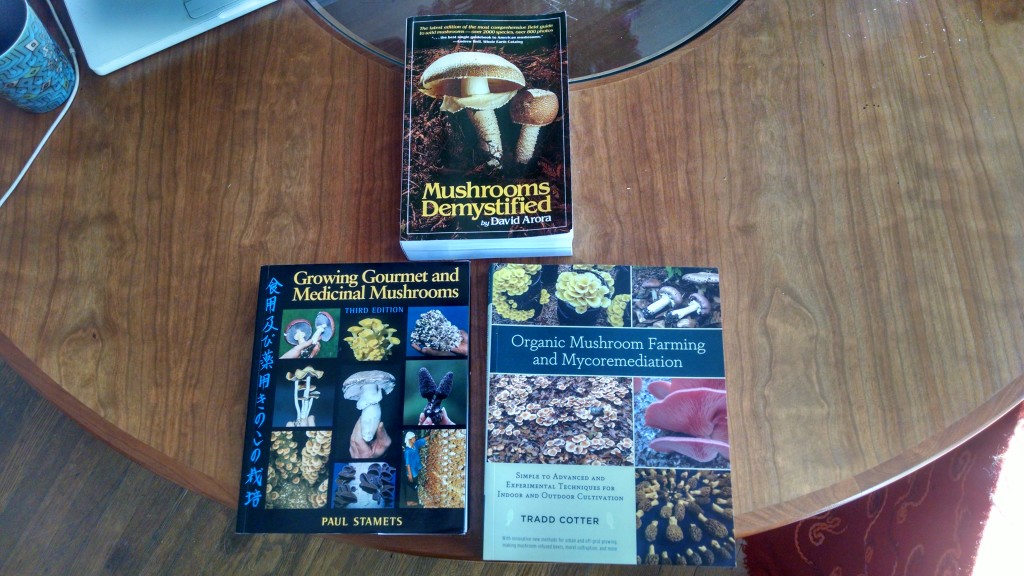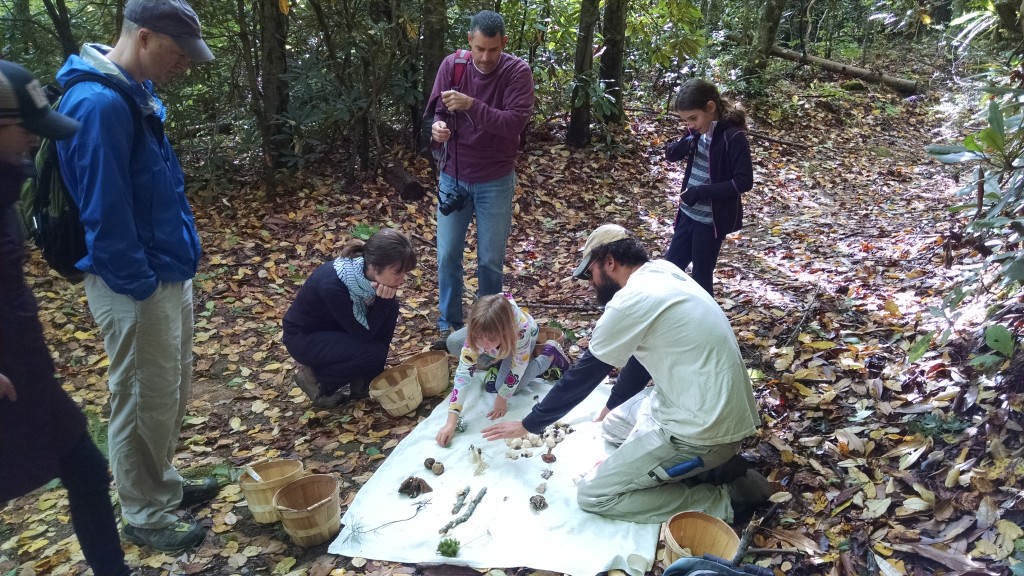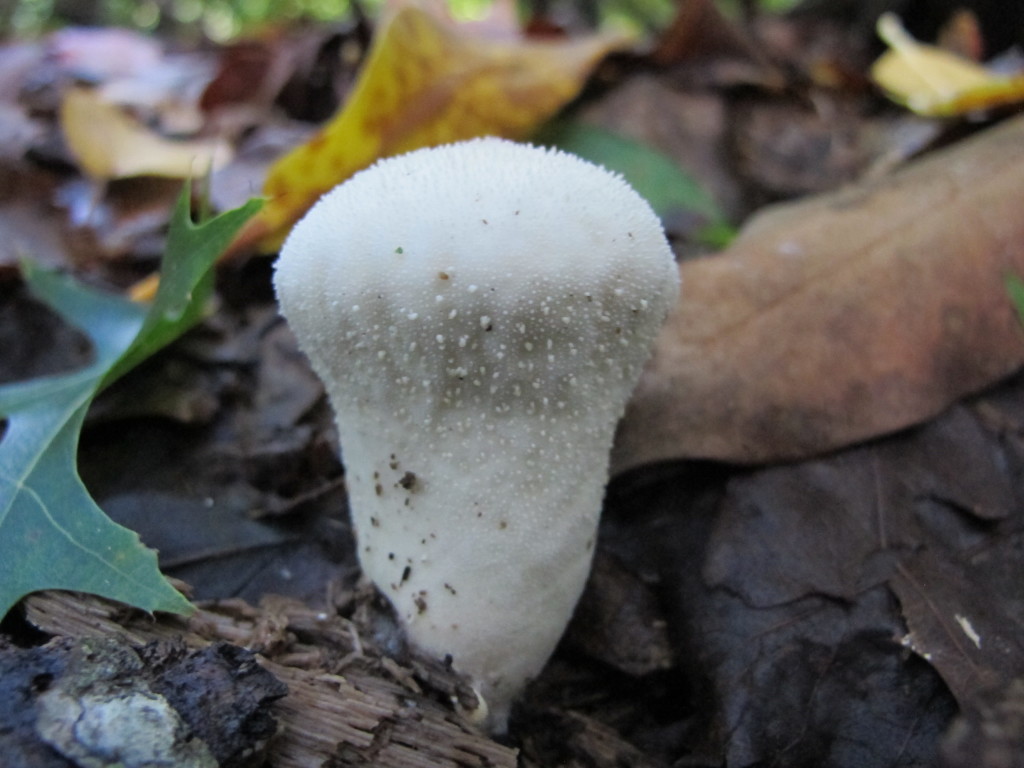Mushrooms have come into full focus for Marc and I in Asheville the past few weeks. Frank Cook also studied mushrooms extensively, learning from folks from coast to coasts like Christopher Hobbs, Daniel Nicholson, Alan Muskat, and Greenlight. My “mycofascination” began in earnest with the Green Scene, and the conversation about plants is incomplete without a discussion about fungi (and, to be honest, everything, but for the sake of this blog I’ll focus on fungi). A number of types of fungi exist, including endo-, ecto-mycorhizal fungi (fungi that form symbiotic relationships with plant roots externally and internally, respectively), and saprophytic fungi (fungi that feed off of dead wood), and this friendly (and sometimes not so friendly) kingdom of decomposers help the world turn in a big way.
In late September, Marc and I had the privilege of attending two talks with Paul Stamets, founder and president of Fungi Perfecti, internationally renowned mycological researcher, and author of several books. The first talk, held at the Warren Wilson College Presbyterian Church, was a paradigm shifting evening during which Stamets reviewed some of the most cutting edge research he and other mycologists have been conducting over the past few decades. I have previously been blown away by findings Stamets has outlined in his talks, and it appears that mycological research has continued to yield incredible results. From turkey tail’s (Trametes versicolor) cancer fighting properties and synergistic effects with chemotherapy drugs, molds growing inside the reactor room at Chernobyl, Lions Mane’s (Hericium sp.) potential for helping with Parkinson’s disease, to mycoremediation of water, this talk was endlessly fascinating.
Stamets ended his talk at Warren Wilson by discussing his research with bees. He picked up this thread the ensuing Saturday at Haywood Community College at Our Planet in Balance: Bees, Fungi and Man, a symposium sponsered by the Center for Honeybee Research. It appears that saprophytic, polypore fungi could be the key to boosting honeybee’s immune systems so they can tolerate the challenges they are facing with insecticides, introduced pests, movement and congregation in commercial honey production, among various other issues. So for all of you health practitioners, researchers, and nature aficionados out there, check out some mycological research in your field! You may just pick up the scent on a trail to a big discovery, and will at minimum find some new tools for your practice.

It was fitting that shortly after Paul’s talks, Marc taught for No Taste Like Home, a foraging tour at The Blue Ridge Assembly. No Taste Like Home focuses on acquainting participants with edible and poisonous mushrooms (it is equally important, if not more so, to know what you CAN’T eat as what you can, as with plants). This was a great compliment to some of my recent ventures with mushroom foraging. Endless information is available, but there is sometimes nothing better than having someone outline, in person, some of the ground rules about how to go about an activity, particularly mushroom foraging.

After Marc outlined the rules for harvesting mushrooms, the group dispersed for about 15 minutes to collect mushrooms and any other things organisms that caught their eye. When they came back, Marc separated the edible from the questionable. We repeated this process twice more, each time returning with similar but different collections of mushrooms, plants, and woodland detritus. Each time, Marc would elaborate on each of the items brought back.

Around noon, we took our larder of puffballs (Lycoperdon sp.) and cooked them with some wild onion (Allium sp.), and Hen of the Woods (Grifola frondosa) Marc had picked up from Alan Muskat, founder of No Taste Like Home. Due to the season and rains, or lack-there-of, the harvest of edible mushrooms by the group was limited. However, many different species of mushroom and plants were collected and everyone came away feeling a bit closer to the mushroom kingdom. A few of the kids on the tour who didn’t like mushrooms before the tour tried them and loved them!

There is nothing quite as empowering as learning something new. This feeling takes on a greater meaning when one is learning about a whole new taxonomic kingdom. After lifting the green wall and learning about plants, the next logical step appears to be to confront mycophobia and to befriend this incredible kingdom of organisms. Knowledge compounds knowledge, and in an ever-changing world, it seems prudent that we acquaint ourselves with the diversity around us, not only for the incredible discoveries just around the corner, but to enrich our own experience and interaction with the world around us.
By Hayden Stebbins